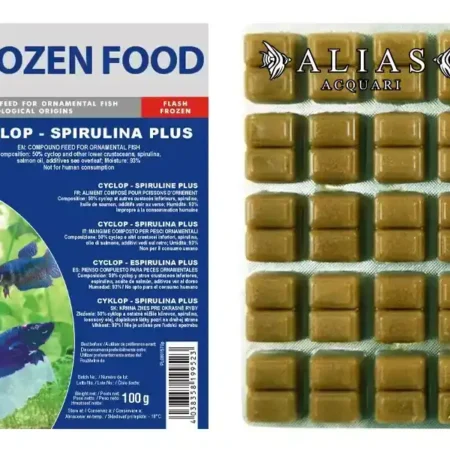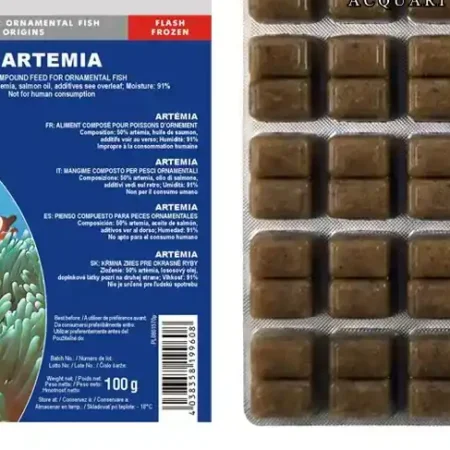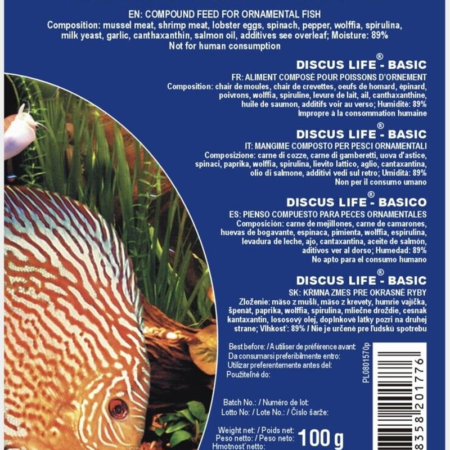-
×
-
×
Premium Betta Fish Food - 6x100g Frozen Fish Food Cubes for Quality Betta Fish Nutrition with Cyclop & Spirulina for Optimal Health Benefits 1 × £11.00
-
×
-
×
-
×
6x100g Frozen Artemia Blister – Eco-Frozen Artemia & Salmon Oil Cubes, Nutrient-Rich Fish Food for Thriving Tropical Fish, Ideal for Enhancing Aquarium Health, Rich in Omega Fatty Acids for Vibrant Colors 1 × £13.00
-
×
6X100G Filter Feeder Food Blister – Microalgae & Zooplankton Cubes, Easy-to-use food cubes for thriving marine life, optimal nutrition for peaceful filter feeders in your beautiful tank. 1 × £12.00
-
×
-
×
Subtotal: £140.90


 Premium Betta Fish Food - 6x100g Frozen Fish Food Cubes for Quality Betta Fish Nutrition with Cyclop & Spirulina for Optimal Health Benefits
Premium Betta Fish Food - 6x100g Frozen Fish Food Cubes for Quality Betta Fish Nutrition with Cyclop & Spirulina for Optimal Health Benefits 

 6x100g Frozen Artemia Blister – Eco-Frozen Artemia & Salmon Oil Cubes, Nutrient-Rich Fish Food for Thriving Tropical Fish, Ideal for Enhancing Aquarium Health, Rich in Omega Fatty Acids for Vibrant Colors
6x100g Frozen Artemia Blister – Eco-Frozen Artemia & Salmon Oil Cubes, Nutrient-Rich Fish Food for Thriving Tropical Fish, Ideal for Enhancing Aquarium Health, Rich in Omega Fatty Acids for Vibrant Colors  6X100G Filter Feeder Food Blister – Microalgae & Zooplankton Cubes, Easy-to-use food cubes for thriving marine life, optimal nutrition for peaceful filter feeders in your beautiful tank.
6X100G Filter Feeder Food Blister – Microalgae & Zooplankton Cubes, Easy-to-use food cubes for thriving marine life, optimal nutrition for peaceful filter feeders in your beautiful tank. 
















Emily Carter (verified owner) –
I recently added the Apistogramma Juriensis to my aquarium, and I couldn’t be happier! These little dwarf cichlids are not only beautiful with their vibrant colors, but they also have such unique personalities. I’ve had them for about two months now, and they’ve settled in beautifully. Their small size (around 3 inches) makes them perfect for my 20-gallon tank, and they get along well with my other peaceful fish.
What impresses me most is their behavior—watching them explore their environment and interact with each other is a joy. Compared to other dwarf cichlids I’ve kept, like the Apistogramma cacatuoides, the Juriensis seem to have more personality and are less aggressive.
One minor concern is they do need plenty of hiding spots, so I recommend adding some plants or caves. Overall, if you’re looking for a rare fish that’s both stunning and engaging, the Apistogramma Juriensis is a fantastic choice. They’ve brought so much life to my setup, and I highly recommend them to any aquarium enthusiast!
Emily Carter (verified owner) –
As a passionate fish parent, I recently welcomed the Apistogramma Juriensis into my aquarium, and I couldn’t be happier! After about two months of care, I’ve watched these beautiful dwarf cichlids flourish. Their vibrant colors and unique patterns have made my tank a true centerpiece. I’ve kept various tropical fish before, but this species stands out for its personality and the way it interacts with its environment. They love to explore their surroundings, darting in and out of the plants, which adds so much life to my setup.
While I initially worried about their compatibility with my existing fish, I took my time to research and arrange the tank properly, ensuring plenty of hiding spots. This consideration has paid off!
One minor concern was their territorial nature during breeding, but with a little careful observation, I’ve managed the dynamics without any issues. I’d recommend these rare fish to anyone looking to enhance their aquatic environment, especially those who appreciate a bit of personality in their aquarium. Overall, I would buy them again in a heartbeat!